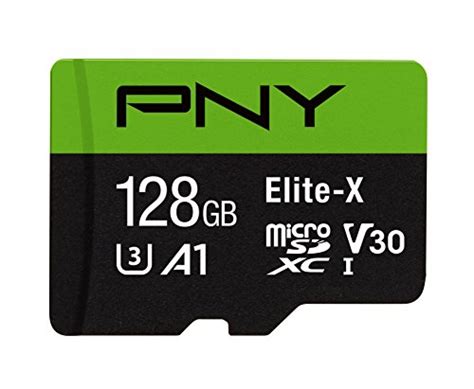
Criminal statutes in every state have multiple categories of criminal offenses, which often include felonies, misdemeanors, and infractions. Lawmakers determine the category of a particular offense based on factors like the offense’s severity, the circumstances in which it took place, and the damage caused. Certain provisions of federal criminal law apply to people with felony convictions, so Congress enacted additional definitions of “felony” to apply to state-level offenses.
The most serious criminal offenses, such as those that cause or threaten serious bodily injury to a person, or that cause a person’s death, are categorized as felonies. Theft- or fraud-related offenses, particularly white-collar criminal schemes, are often classified as felonies if the amounts involved exceed certain benchmarks. Repeat offenders might be charged with a felony for an offense that might not be considered a felony in other circumstances.
Generally, a felony is an offense punishable by more than one year in prison, while a misdemeanor is an offense punishable by imprisonment of a year or less.
Felonies are often divided into sub-categories in order to determine punishment, such as first- second-, or third-degree offenses. Punishment may include imprisonment for one year to life, or life imprisonment without the possibility of parole in some jurisdictions. Federal criminal law and many states allow imposition of the death penalty in some murder cases.
At a criminal trial for a felony offense, the accused has the right to an attorney, including the right to a public defender if he or she cannot afford a lawyer. Defendants also have the right to have an impartial jury hear their case. The jury must reach a unanimous verdict in order to convict.
Felonies may also be punishable by a fine, often in the thousands or tens of thousands of dollars. If a defendant pleads guilty to a felony offense, a court may approve a period of probation, during which the defendant must avoid further legal trouble and meet regularly with a probation officer in order to avoid serving the prison term.
Misdemeanor offenses are less serious than felonies but typically still punishable by up to one year in jail, a fine in the range of hundreds or thousands of dollars, and other court-ordered conditions. States may categorize felonies into classes, such as class A or class B misdemeanors, and some states define serious offenses that do not quite rise to the level of a felony as “gross misdemeanors.” Defendants charged with misdemeanor offenses usually have the right to an attorney of their choice and a jury trial, although state laws vary on details such as requiring unanimity for a guilty verdict.
Similar offenses can be classified differently based on the circumstances, such as prior convictions. For example, a first-time shoplifting offense would likely be classified as a misdemeanor, while a second or third shoplifting offense could be classified as a felony.
Offenses that might be punishable by a fine, but not jail time, are often known as infractions. These might include traffic offenses, such as speeding, parking violations, and other minor offenses. While a defendant has the right to challenge the state’s allegations in court, other constitutional rights, such as the right to a court-appointed attorney or a jury trial, might not apply.
Some federal statutes impose restrictions on people who have been convicted of a felony, either at the state or federal level. These statutes often include specific definitions of “felony” in order to ensure that they are applied consistently.
The Gun Control Act of 1968, for example, made it illegal for people to own or possess firearms in certain circumstances if they had been convicted of an offense with a possible punishment of more than one year, regardless of the person’s actual sentence. Federal immigration law allows the deportation of non-citizens who have been convicted of an “aggravated felony,” defined to include a wide range of offenses involving violence or fraud.
Last reviewed October 2021
Criminal Law Contents
 Smead 100 Recycled Pressboard Classification File Folder 1 Divider 2quot Expan
Smead 100 Recycled Pressboard Classification File Folder 1 Divider 2quot Expan
 Classic Accessories Veranda Water Resistant 11 Foot Patio Umbrella Cover
Classic Accessories Veranda Water Resistant 11 Foot Patio Umbrella Cover
 Sandisk 16 Gb Class 10 Sd Hc Ultra Flash Memory Card 10 Pack Bundle With
Sandisk 16 Gb Class 10 Sd Hc Ultra Flash Memory Card 10 Pack Bundle With
 Fairwin Braided Leather Dog Training Leash 6 Foot 56 Foot Military Grade H
Fairwin Braided Leather Dog Training Leash 6 Foot 56 Foot Military Grade H
 3m Reflective Dog Leash 5ft Long With Traffic Padded Handle Dog Training Leas
3m Reflective Dog Leash 5ft Long With Traffic Padded Handle Dog Training Leas
 How To Be Your Dogs Best Friend The Classic Training Manual For Dog Owners
How To Be Your Dogs Best Friend The Classic Training Manual For Dog Owners
 Classical Naptime For Tots
Classical Naptime For Tots
 Doggie Stylz Set Of 2 Reflective Therapy Dog In Training Removable Patches Wit
Doggie Stylz Set Of 2 Reflective Therapy Dog In Training Removable Patches Wit
 6 Pcs Service Dog In Trainingworkingstress Amp Anxiety Response Embroidere
6 Pcs Service Dog In Trainingworkingstress Amp Anxiety Response Embroidere
 Service Dog In Training Patch With Hook Back And Reflective Lettering For Servic
Service Dog In Training Patch With Hook Back And Reflective Lettering For Servic
 Four Paws Wee Wee Pee Pads For Dogs And Puppies Training L Gigantic Xl St
Four Paws Wee Wee Pee Pads For Dogs And Puppies Training L Gigantic Xl St
 Pny 128gb Elite X Class 10 U3 V30 Microsdxc Flash Memory Card 100mbs
Pny 128gb Elite X Class 10 U3 V30 Microsdxc Flash Memory Card 100mbs














